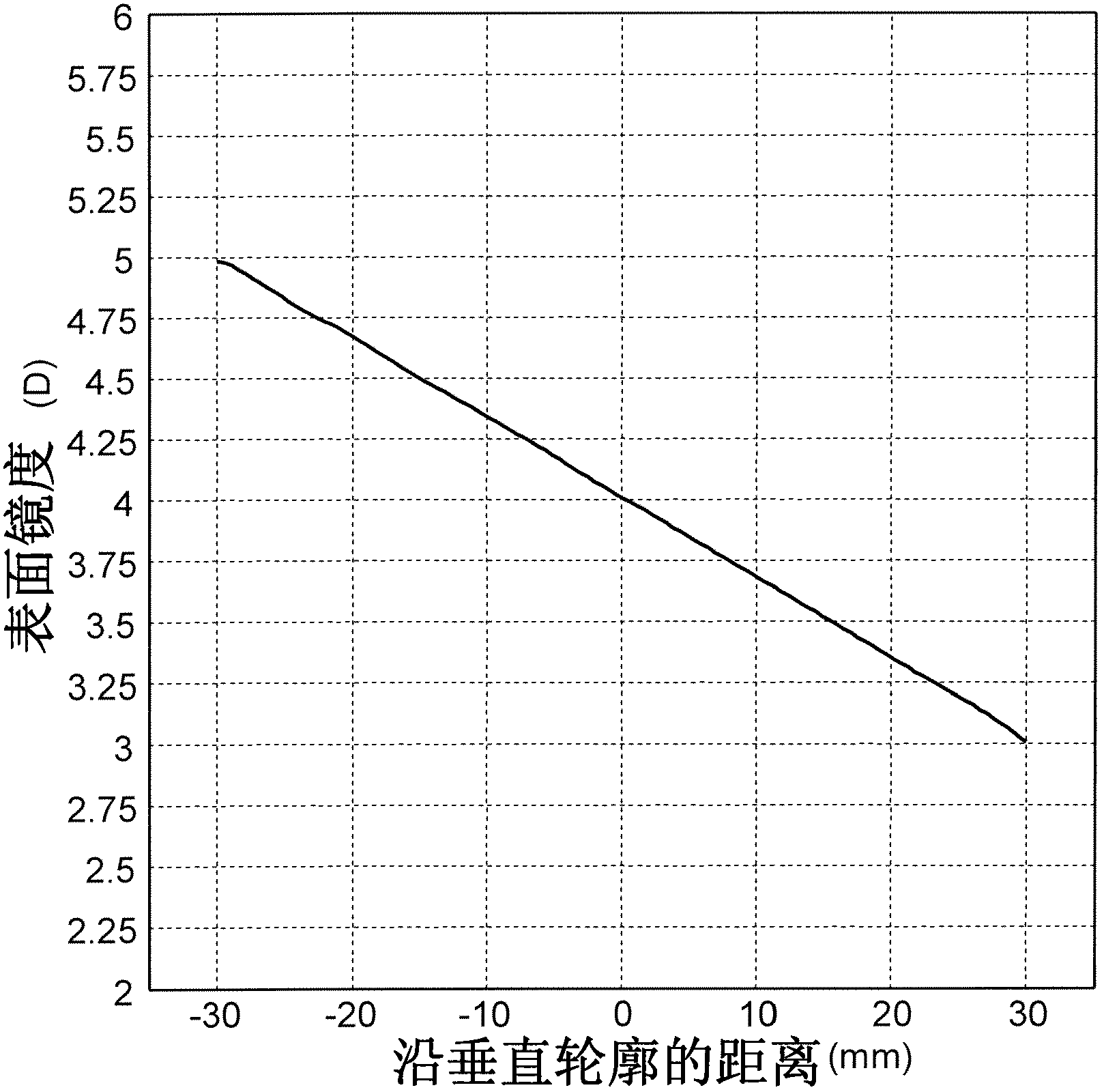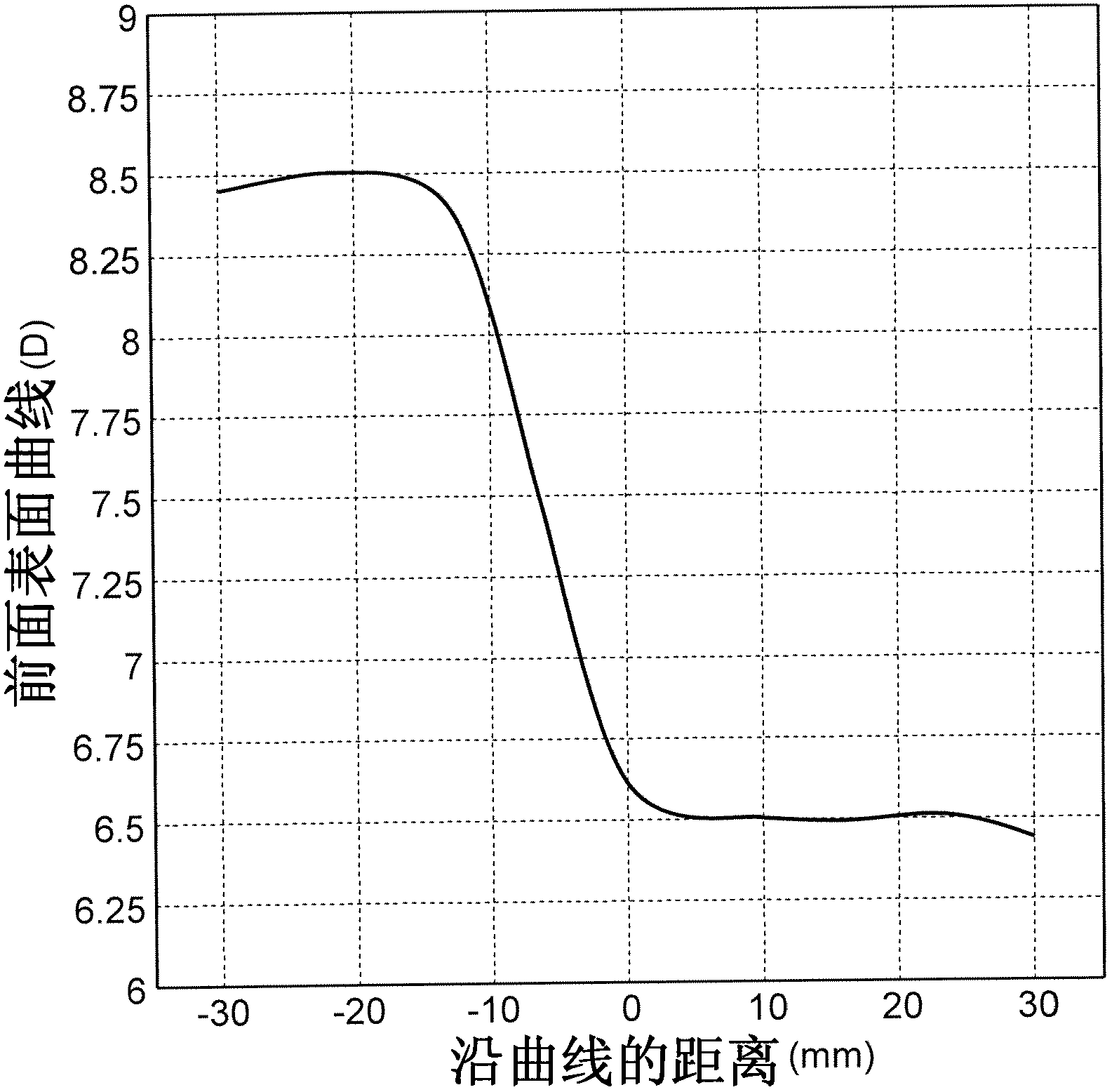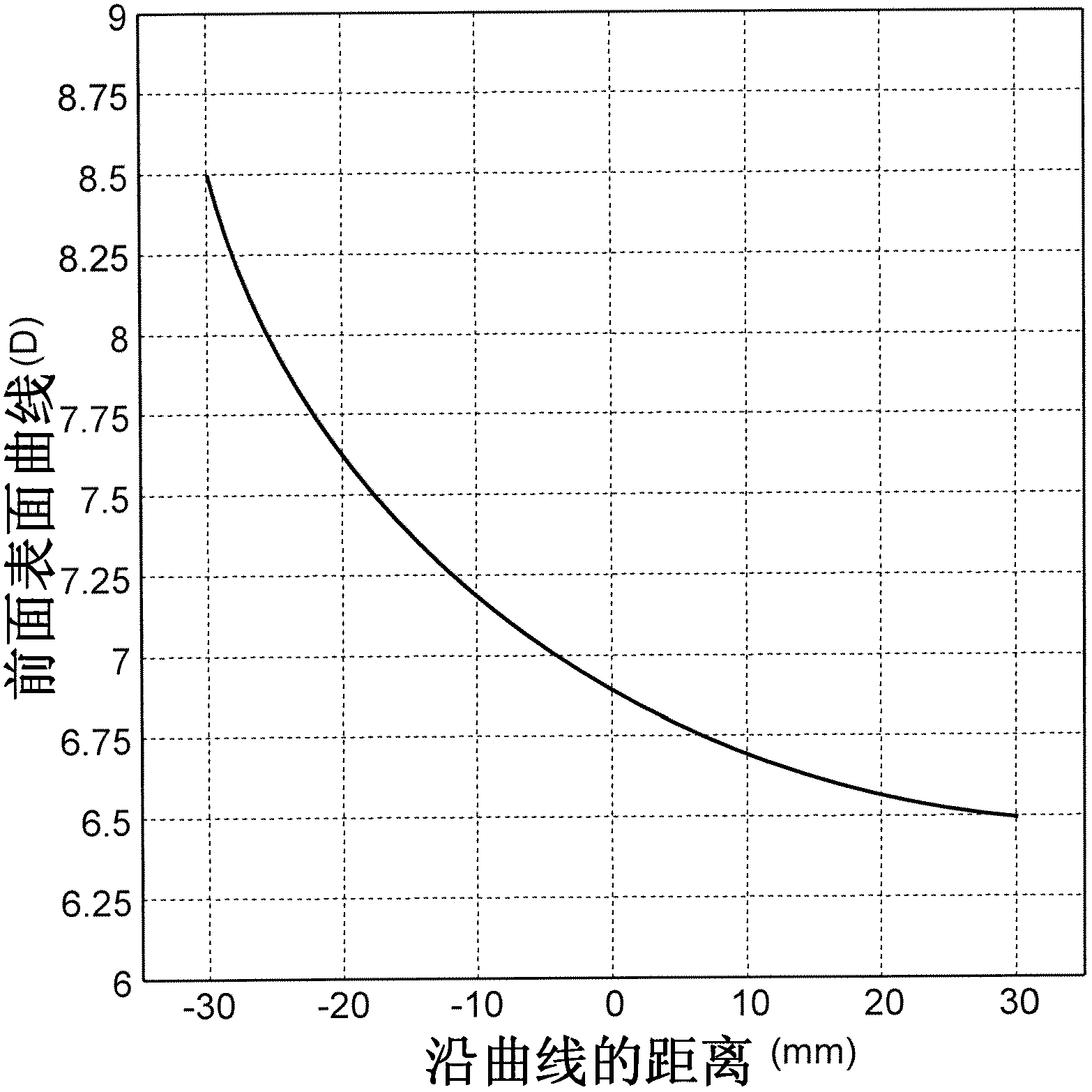Lens with continuous power gradation
一种镜片、镜度的技术,应用在连续镜度渐变的镜片领域,能够解决高成本、时间和资源、增加设计复杂性、镜片增加重量等问题
- Summary
- Abstract
- Description
- Claims
- Application Information
AI Technical Summary
Problems solved by technology
Method used
Image
Examples
Embodiment Construction
[0046] The invention is implemented in spectacle lenses having one surface described by a continuous, progressive increase in optical power, and which surface and the opposite surface of the lens combine to form one or more active areas of stable optical power. The use of surfaces comprising continuous, progressive power increases, in contrast to normal progressive lens surfaces, which are generally implemented on at least one lens surface with approximately constant or stable optical power for distance vision. area, another effective area of the same lens surface for different, approximately constant or stable optical powers for near vision, and for "progress" in power from one value to another, between the two The narrow, intermediate region between defined optical power regions. In this way, the stable power "plateaus" are joined by transition regions characterized by rapid power increases and turning points. Instead, the present invention provides a continuous power pro...
PUM
 Login to View More
Login to View More Abstract
Description
Claims
Application Information
 Login to View More
Login to View More - R&D
- Intellectual Property
- Life Sciences
- Materials
- Tech Scout
- Unparalleled Data Quality
- Higher Quality Content
- 60% Fewer Hallucinations
Browse by: Latest US Patents, China's latest patents, Technical Efficacy Thesaurus, Application Domain, Technology Topic, Popular Technical Reports.
© 2025 PatSnap. All rights reserved.Legal|Privacy policy|Modern Slavery Act Transparency Statement|Sitemap|About US| Contact US: help@patsnap.com



